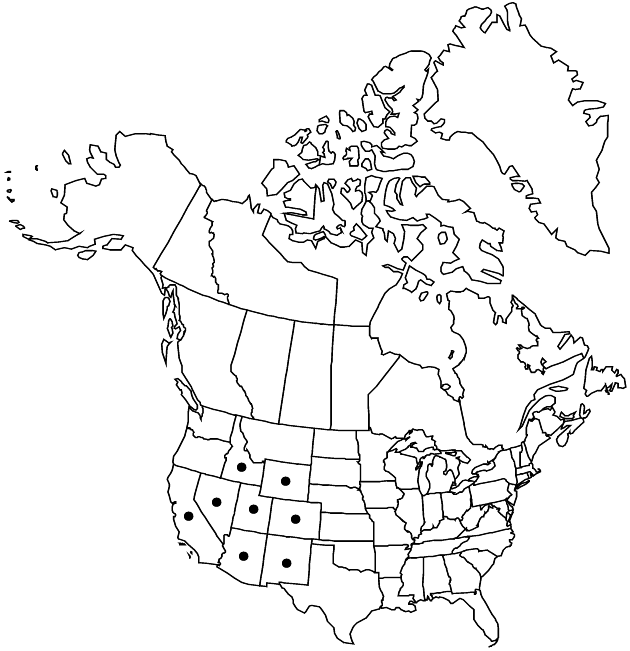Petradoria pumila
Erythea 3: 13. 1895.
Stems 1–20+. Leaf-blades 20–120 × 1–12 mm; cauline well developed, coriaceous, bases cuneate to attenuate, expanded laterally and abaxially, clasping, less so distally, apices acute to attenuate. Peduncles 1–5+ mm, glabrous or scabrous, resinous. Phyllaries mostly tan, 1–7 × 0.5–1+ mm, margins mostly entire, apices acute to attenuate (outer), obtuse to truncate, often mucronate (inner), a darker, thickened subapical gland often present. Ray-florets 1–3, pistillate; corollas 4–8 mm, tubes 2–3.5 mm, laminae ± elliptic, 2.5–4.5 × 0.7–2.5 mm, lobes 0.5–1 mm; style-branches 1–2 mm, linear-lanceolate, stigmatic lines extending around entire margin, appendages 0. Disc corollas 3.5-5.5 mm; style-branches essentially lacking, stigmatic lines 0, appendages ± 1 mm, covered with collecting hairs. Cypselae of ray 4–5 mm; pappi 3.5–7 mm.
Distribution

Ariz., Calif., Colo., Idaho, N.Mex., Nev., Utah, Wyo.
Discussion
Varieties 2 (2 in the flora).
Selected References
None.
Key
| 1 | Leaves usually 1(–3)-nerved, 1–2 mm wide, often; involucres 1.3–2 mm wide; ray florets usually 1, laminae 0.7–1.5 mm wide; disc florets 2–3 | Petradoria pumila var. graminea |
| 1 | Leaves usually 3–5-nerved, 2–12 mm wide; involucres 1.9–3 mm wide; ray florets usually (1–)2–3, laminae 1–2.4 mm wide; disc florets 2–4 | Petradoria pumila var. pumila |
"[" is not declared as a valid unit of measurement for this property."]" is not declared as a valid unit of measurement for this property.